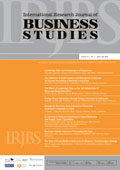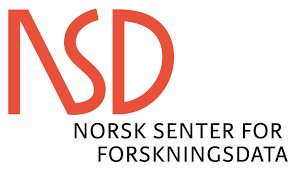Article Metrics |
|
|
Investigating the Rural and Entrepreneurial Development through Microfinance
Abstract
Keywords
Full Text:
References
Abrar, A., Hasan, I., & Kabir, R. (2021). Finance-growth nexus and banking efficiency: The impact of microfinance institutions. Journal of Economics and Business, 114, 105975.
Agboola, M. G., & Osunde, C. (2012). Microfinance and entrepreneurial development in Nigeria. JORIND, 10(3), 405-410.
Ahmad, N. M., & Ahmad, M. M. (2016). Role of microcredit towards socioeconomic empowerment of Pakistani urban women. The Anthropologist, 26(3), 189-197.
Al-Mamun, A., Wahab, S. A., Mazumder, M. N. H., & Su, Z. (2014). Empirical investigation on the impact of microcredit on women empowerment in urban Peninsular Malaysia. The Journal of Developing Areas, 287-306.
Angelucci, M., Karlan, D., & Zinman, J. (2013). Win some lose some? Evidence from a randomized microcredit program placement experiment by Compartamos Banco (No. w19119). National Bureau of Economic Research.
Armendáriz de Aghion, B., & Morduch, J. (2005). The Economics of Microfinance MIT Press. Cambridge, Massachusetts.
Armendáriz, B., & Morduch, J. (2010). The economics of microfinance. MIT press.
Avais, M. (2014). Financial innovation and poverty reduction. International Journal of Scientific and Research Publications, 4(1), 2250-3153.
Babbie (2008). The Basics of Social Research. Belmont CA: Thomson Wadsworth.
Bansal, S., & Singh, A. K. (2019). Examining the social and entrepreneurial development of women through Microfinance in Indian context. Journal of Management Development. DOI 10.1108/JMD-05-2019-0146.
Caskey, J. P., Duran, C. R., & Solo, T. M. (2006). The urban unbanked in Mexico and the United States. The World Bank.
Chakrabarty, K. C. (2011). Banking and beyond: new challenges before Indian financial system. RBI Monthly Bulletin April.
Chibango, C. (2014). Revolution Mobile Money: An Opportunity for Financial Inclusion in Africa. The International Journal of Humanities &Social Studies 2, 59, 67.
Davis, M. (2002): Late Victorian Holocausts: El Niño Famines and the Making of the Third World, Verso, London, pp. 529.
Divya, K. (2014). Banks on wheels for financial inclusion: a case study. International Journal of Research in Computer Applications and Management, 4(9), 36-40.
Erenstein, O. (2011). Livelihood assets as a multidimensional inverse proxy for poverty: a district‐level analysis of the Indian Indo‐Gangetic Plains. Journal of Human Development and Capabilities, 12(2), 283-302.
Financial Express (2019): Around 22% Indians live below poverty line; Chhattisgarh, Jharkhand fare worst, Sep 21, 2019, https://www.financialexpress.com/economy/around-22-indians-live-below-poverty-line-chattisgarh-jharkhand-fare-worst/1713365/
Ganlea, John, Kuumuori, Kwadwo Afriyie, & Alexander Yao Segbefia. (2015). Microcredit: Empowerment and disempowerment of rural women in Ghana, World Development, 3, 35–45.
Garikipati, S., Agier, I., Guérin, I., & Szafarz, A. (2017). The cost of empowerment: multiple sources of women’s debt in rural India. The
Journal of Development Studies, 53(5), 700-722.
Ghalib, A. K., Malki, I., & Imai, K. S. (2015). Microfinance and household poverty reduction: Empirical evidence from rural Pakistan. Oxford Development Studies, 43(1), 84-104.
Godinho, V., Eccles, K., & Thomas, L. (2018). Beyond Access: The role of microfinance in enabling financial empowerment and wellbeing for Indigenous clients: lessons from remote Australia. Third Sector Review, 24(2), 57-76.
Hair, J. F., Black, W. C., Babin, B. J., Anderson, R. E., & Tatham, R. L. (2008). Multivariate Data Analysis (6th Eds) Pearson Prentice Hall. New Jersey.
Hassan, S. M., & Islam, M. M. (2019). The socio-economic impact of microfinance on the poor family: A study from Bangladesh. Journal of Asian and African Studies, 54(1), 3-19.
IBEF (2020): Indian Rural Market: Brief Overview, available November 30, 2020, https://www.ibef.org/pages/30474
Imai, K. S., & Azam, M. S. (2012). Does microfinance reduce poverty in Bangladesh? New evidence from household panel data. Journal of Development studies, 48(5), 633-653.
Imai, K. S., Gaiha, R., Thapa, G., & Annim, S. K. (2012). Microfinance and poverty—a macro perspective. World development, 40(8), 1675-1689.
Isangula, K. (2012). Improving women and family’s health through integrated microfinance, health education and promotion in rural areas. Journal of sustainable development, 5(5), 76.
Jayakumari, A. G. (2015). Financial inclusion: an Indian outlook. Research Journal of Social Science & Management, 4(11), 1-5.
Jose, S., & Chacko, J. (2017). Sustainable development of microfinance customers: An empirical investigation based on India. Journal of Enterprise Information Management. 30 (1). 55-65.
Jyothi, P., & Savitha, B. (2013). Delivery of microcredit to self help groups by regional rural banks in Andhra Pradesh. Research Journal of Social Science & Management, 3(6), 128-134.
Khandker, S. R. (2005). Microfinance and poverty: Evidence using panel data from Bangladesh. The world bank economic review, 19(2), 263-286.
Lakshmi, P., & Visalakshmi, S. (2013). Impact of cooperatives in financial inclusion & comprehensive development. Journal of Finance and Economics, 1(3), 49-53.
Lal, T. (2018). Impact of financial inclusion on poverty alleviation through cooperative banks. International Journal of Social Economics. 45(5), 808-828.
McIntosh, C., Villaran, G., & Wydick, B. (2011). Microfinance and home improvement: using retrospective panel data to measure program effects on fundamental events. World Development, 39(6), 922-937.
Morris, G., & Barnes, C. (2005). An assessment of the impact of microfinance: a case study from Uganda. Journal of Microfinance/ESR Review, 7(1), 4.
Rehman, H., Moazzam, D. A., & Ansari, N. (2020). Role of microfinance institutions in women empowerment: A case study of Akhuwat, Pakistan. South Asian Studies, 30(1).
Roodman, D., & Morduch, J. (2014). The impact of microcredit on the poor in Bangladesh: Revisiting the evidence. Journal of Development Studies, 50(4), 583-604.
Samer, S., Majid, I., Rizal, S., Muhamad, M. R., & Rashid, N. (2015). The impact of microfinance on poverty reduction: Empirical evidence from Malaysian perspective. Procedia-Social and Behavioral Sciences, 195, 721-728.
Shirazi, N. S. (2012). Targeting and socio-economic impact of microfinance: A case study of Pakistan. Islamic Economic Studies, 20(2).
Ukanwa, I., Xiong, L., & Anderson, A. (2018). Experiencing microfinance: Effects on poor women entrepreneurs’ livelihood strategies. Journal of Small Business and Enterprise Development, 25 (3), 428-446.
Ul-Hameed, W., Mohammad, H., & Shahar, H. (2018). Retracted: Microfinance institute’s non-financial services and women-empowerment: The role of vulnerability. Management Science Letters, 8(10), 1103-1116.
Van Rooyen, C., Stewart, R., & De Wet, T. (2012). The impact of microfinance in sub-Saharan Africa: a systematic review of the evidence. World Development, 40(11), 2249-2262.
Weber, O., & Ahmad, A. (2014). Empowerment through microfinance: The relation between loan cycle and level of empowerment. World Development, 62, 75-87.
World Bank (2001): Attacking poverty. World development report, 2000/2001, World Bank, Washington, DC.
Wun, N. S. L. P., Nusari, M., & Ameen, A. (2019). Effect of microfinance on socio-economic development of rural community in Myanmar. International Journal of Management and Human Science (IJMHS), 3(3), 26-31.
Copyright (c) 2022 Zahoor Ahmad Parray, Shabir Ahmad Bhat, Raouf Ahmad Ahmad Rather, Pirzada Sajad Ahmad
International Research Journal of Business Studies has been covered by the following services: | ||||||||||||||||||||||||
|



















